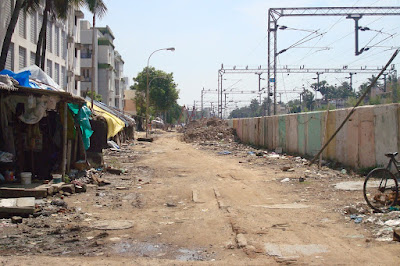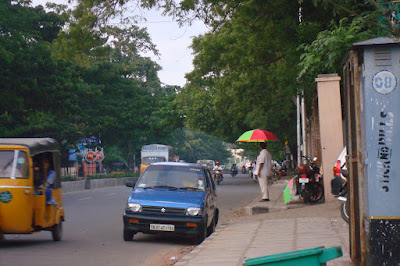Here's wishing everyone around the world a happy, prosperous, peaceful, healthy and fulfilling time in 2009!

There was Chennapattanam and then there was Madras. About 357 years later, in 1996, she became Chennai. And whatever she may be called 385 years from now, she will always remain the "Queen of the Coromandel"! Come wander around this blog. It will give you a peek into her soul!!

With the demand for products like butter being greater from British households (the Indians presumably churned their own), the first plains location for Nilgiri's Dairy Farm was Bangalore, in 1939. By 1945, the store had expanded under Muthusamy's son Chenniappan and was offering a range of products, including ice-creams and confectionery, apart from the flagship dairy and bakery products. With a pasteurising plant in Erode, it was not too difficult to service both Bangalore and Madras, so in the 1960s, Nilgiri's products began to be sold by the Madras Farm Agencies. It would be another two decades before the first full fledged Nilgiri's store was opened in Madras, in 1981.
That store on Radhakrishnan Salai still remains the only Niligiri's run operation in Chennai, along with the Nilgiri's Nest hotel; the other stores in the city are all franchises. Actis, a PE firm took a 51% stake in Niligiri's two years ago to help the chain expand from its current 30-odd stores (in 2006) to about 500 stores by 2011. Not bad for a runner's business-on-the-side!



Listen to Shri Rajam talk about life in those days or watch him sketching in a notebook.
Everybody knows of the Trinity. No, not the ones of religion, but those of Carnatic music. And if you know of them, I'll bet that even as you read this, you will be seeing them sitting together, Dikshitar with his veena, Thyagarajar and Syama Sastri with their tamburus, the former facing us and the latter showing us his left profile. I'm sure I've won the bet, for that's how most of us, especially those who haven't read up on Carnatic music to any great extent, have known of this trinity. Even on the (separate) postage stamps released to honour these individuals, the images of Muthuswami Dikshitar and Syama Sastri are exactly the same as you'd see on the pictures of the Trinity.
So why is Thyagaraja different? Part of the reason could be due to the growing influence of a versatile gentleman named Rajam. In 1961, when Thyagaraja's stamp was released, he was around 42 years old; while he was well-respected for his music and his art, the latter hadn't reached that stage of universal recognition where everyone knows the painting but has no clue as to the artist! By 1976, when Dikshitar was accorded the honour of a postage stamp, the image was the one that Rajam was also basing his work upon, for that meant quick recognition. In 1985, when the stamp on Syama Sastri was being prepared, Rajam's painting was used as the basis for the stamp (but credit was apparently not given). The story goes that an unknown artist had begun work on a portrait of Sastri, but could only complete it till the neck before composer's death. It was Rajam who gave it a body and, in the 1940s, brought together the three greats when the Music Academy commissioned him to paint the Trinity.
Since then, Rajam has made literally hundreds of the Trinity paintings; last week, when some of us had a chance to visit him at home, he showed us a pile of the same paintings that he was working on, among others. As he sketched an outline for us, it was indeed an honour to see the image of the Trinity coming into shape before our eyes!
 A picture of Bentinck's building can be seen on the Chennai Collectorate webpage.
A picture of Bentinck's building can be seen on the Chennai Collectorate webpage.


































